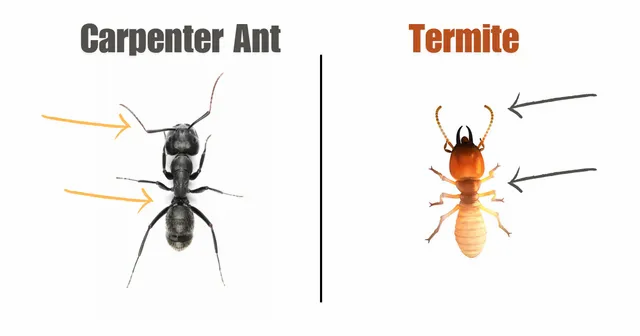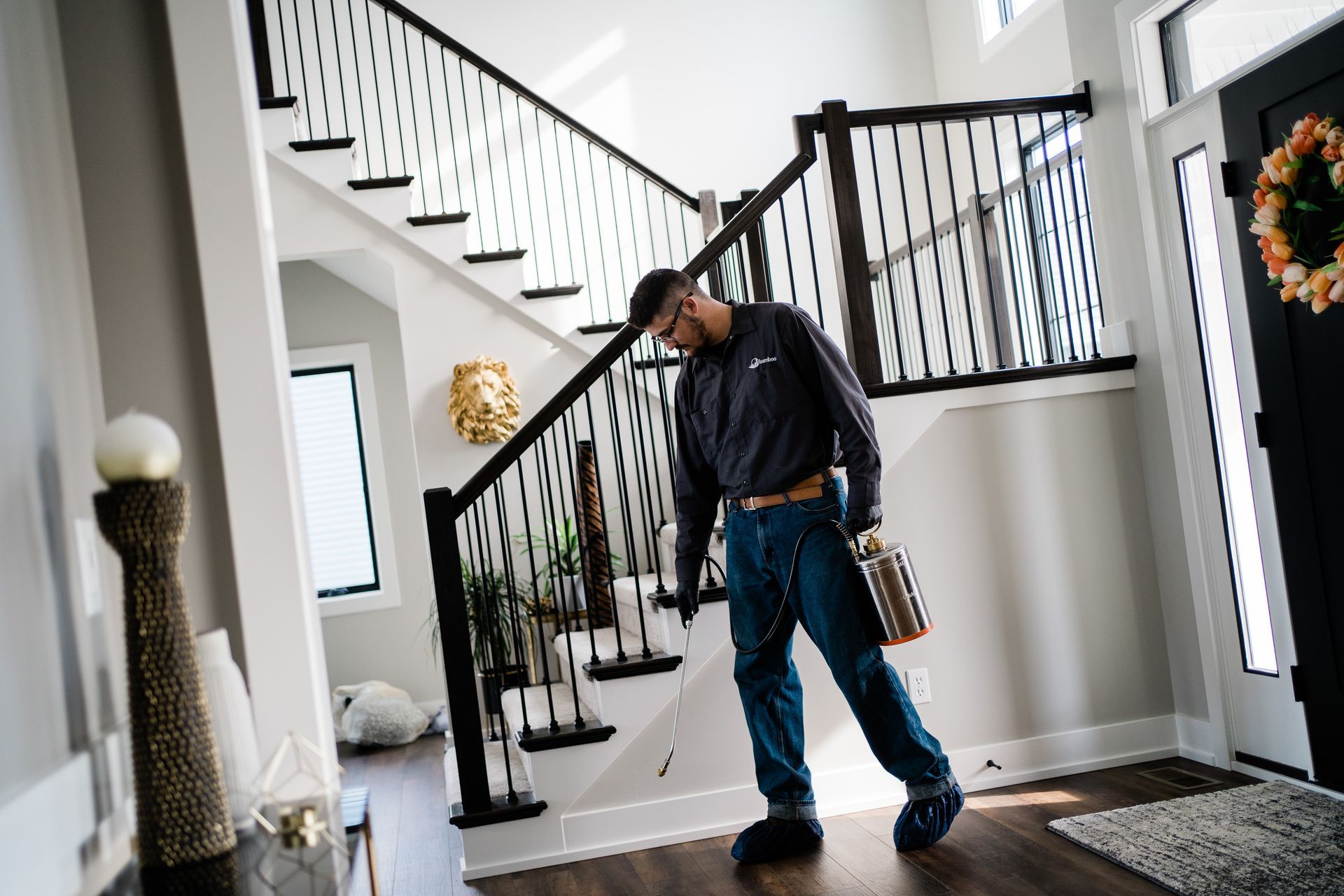Carpenter Ants Vs. Termites:
Which One Is Infesting My Home?
Carpenter Ants vs Termites: What You Should Know
Carpenter ants and termites are two pests that often get confused, but there are significant differences in how they look, behave, and how they can damage your home. It’s important to understand these differences, especially if you’re dealing with an infestation, as both can lead to serious damage if left unchecked. Let's take a closer look at what sets them apart and how to identify which one you might be dealing with. If you're still unsure, it’s always a good idea to contact a local pest control company to help you handle the situation before it worsens.
Size, Shape, and Color: Key Differences
While both carpenter ants and termites share the basic six-legged insect anatomy, their physical features vary in noticeable ways:

- Waist and Body Shape: Carpenter ants have narrow, pinched waists that create a segmented appearance with three distinct body parts. In contrast, termites have a more uniform, straight body with only two sections, giving them a thicker, more solid look overall.
- Antennae: If you examine their antennae, carpenter ants have elbowed, angled antennae that point outward and then forward, while termites have straight, beaded antennae that simply hang downward.
- Wings: Both pests can have wings, but they differ in structure. Winged carpenter ants have two wings on each side, with the front wings larger than the hind ones. Termites, however, have four wings of equal size, making them more symmetrical in appearance.
- Color:
Carpenter ants typically have dark colors like black, brown, or sometimes reddish hues. Termites, on the other hand, have lighter colors, ranging from translucent white to light brown, depending on their role within the colony.
Differences In Behavior and Damage to Wood
The way carpenter ants and termites interact with wood is one of the most important differences homeowners need to know.
- Termites Eat Wood: Termites are notorious for eating through wood, as it is their primary food source. They consume the wood they infest, which can cause extensive structural damage to homes if left unchecked. Signs like sagging floors, ceilings, or walls—often mistaken for water damage—could indicate a serious termite infestation.
- Carpenter Ants Nest in Wood:
Carpenter ants don’t actually eat wood; instead, they chew through it to create tunnels and nests. While this still causes damage to structures, it’s typically less severe than what termites do. Carpenter ants are also drawn to human food, so you may spot them in your kitchen, scavenging for snacks.
Carpenter ants are generally easier to spot because they often leave their nests to forage for food. As they travel, they may leave small piles of wood shavings or excrement, called frass, near their nesting sites. This can help you locate their presence early on.
Termites, however, tend to stay hidden within the wood, rarely venturing outside the nest. This makes them harder to detect and allows them to do significant damage over time without being noticed. Their appetite for wood means they can weaken support beams and other structural components of a home, posing a serious threat if not addressed promptly.
Whether you’re dealing with carpenter ants or termites, it's crucial to act quickly to prevent further damage to your home. Bellevue Pest Control By Bamboo offers expert pest control services that can help you identify, treat, and prevent infestations from both carpenter ants and termites. Contact us today to protect your home from these destructive pests!

Infestation Signs: Carpenter Ants vs. Termites
Knowing whether you have carpenter ants or termites in your home is crucial for addressing the problem before it gets out of control. Here are a few signs to help you identify which pest has made its way into your property. If you're ever unsure, don’t hesitate to contact a pest control professional. These pests can cause significant damage if their colonies are left to grow unchecked.
Sawdust and Frass
If you notice small piles of what looks like sawdust around your home, particularly near wooden structures, it’s likely from carpenter ants. This material, known as frass, is a byproduct of the ants burrowing into the wood to build their nests. On the other hand, termites don’t leave behind wood shavings or frass, as they consume the wood entirely, turning it into food for the colony.
Mud Tunnels
Termites create mud tubes to travel between their nests and food sources. These tubes protect the termites as they move and can often be found on the exterior foundation of a home. If you spot these mud tunnels running along your walls or foundation, it’s a sign of a termite infestation, as carpenter ants do not build such structures.
Wood Damage
The way these pests damage wood is another telltale sign. Termites hollow out wood completely as they eat through it, often leaving behind a honeycomb pattern inside walls or beams. Carpenter ants, meanwhile, burrow into the wood to create tunnels, but they don’t consume it. If you find wood with small, scattered holes or tunnels running through it, carpenter ants are likely the culprits.
Dealing with Carpenter Ants and Termites
Whether you’re facing a carpenter ant or termite infestation, it’s always best to consult with a professional pest control service. Termites can cause severe structural damage if left untreated, leading to costly repairs and significant delays in construction or remodeling projects. They are known to be a "schedule killer" in the remodeling industry due to the damage they cause.
While carpenter ants are less destructive than termites, they can still pose a threat to your property if their nests are allowed to grow. They can also present health risks to your family, so it’s important to deal with the problem quickly. If you're dealing with either pest in Bellevue, WA, contact Bellevue Pest Control By Bamboo today to eliminate the problem before it worsens. Learn more about how we handle common household pests by checking out our comprehensive FAQ guide!
For service call: (425) 230-6855
Copyright © 2024 - Bellevue Pest Control via Bamboo All Rights Reserved
